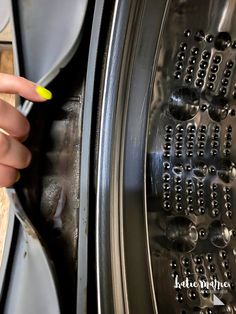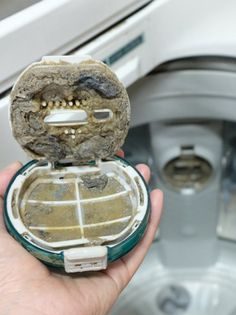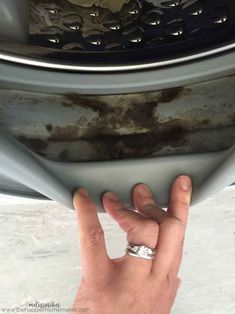Leaving wet clothes in the washer overnight is a common scenario many of us have faced. The pressing question lingers: is it a harmless oversight or a laundry faux pas with consequences?

In this guide, we’ll unravel the mysteries behind this laundry dilemma, exploring the potential issues and offering practical tips to ensure your laundry routine remains efficient and your clothes emerge fresh and clean.
1. The Risks of leaving wet clothes in the washer overnight:
That poses several risks, primarily related to the growth of mildew and the development of musty odors. When clothes remain damp in a closed, confined space, it creates an ideal environment for mold and bacteria to thrive.

If your clothes or bedding have been sitting in the washing machine or a laundry basket for more than 8-12 hours, it’s advisable to consider giving them another wash. Beyond the 12-hour mark, it’s likely that a re-wash is necessary. The extended dampness can create an environment conducive to the growth of bacteria and mildew, resulting in unpleasant odors and potential health risks.
Not only can this lead to unpleasant smells, but it may also affect the fabric’s integrity over time.

According to a medical article featured on Healthline, mildew, a fungus that thrives in warm and damp conditions, finds your washing machine to be an ideal breeding ground. The Centers for Disease Control and Prevention warns that this can lead to symptoms such as a stuffy nose, wheezing, and irritation of the eyes or skin, particularly for individuals who are more sensitive.
For those prone to forgetting their laundry, it might be beneficial to opt for an unscented or chemical-free detergent. Unlike heavily scented detergents that may mask signs of mildew, a gentler option can help you better discern whether a second wash is needed, ensuring your laundry stays fresh and hygienic.
2. Mildew Prevention Techniques:
To prevent mildew when clothes are accidentally left in the washer, ensure proper ventilation in your laundry area. This can be achieved by leaving the washer door ajar after use. Opt for fabrics that dry quickly, and consider adding anti-mildew agents, such as white vinegar or baking soda, to your laundry routine. These natural ingredients can help inhibit the growth of mold and bacteria.

If your damp laundry has been left undisturbed for less than 12 hours, and you’re uncertain about whether it requires a second wash, you can perform a simple smell test. Check the items for any noticeable mildew odor, characterized by a musty and often pungent smell.
If no such odor is detected, it’s generally safe to proceed by hanging the items out to dry or tossing them in the dryer. However, if you observe the development of a white, grey, or yellow texture that is fluffy or powdery on your laundry, it is a clear indication that another wash is necessary to eliminate any potential bacteria or mildew.
3. Optimal Washer Maintenance:
Regular maintenance of your washer is crucial to prevent issues associated with damp clothes. Clean the washer’s interior, including the rubber gasket and detergent dispenser, to remove any residual moisture and detergent buildup. Leaving the door ajar between cycles allows air to circulate and helps keep the washer dry, reducing the likelihood of mold growth.



Examine the interior of the washing machine, focusing on areas like the drum, rubber gasket (found around the door), and the detergent dispenser. Look for any visible residue or mold growth.
To prevent future buildup, leave the door and detergent dispenser open between washes to allow air circulation.
Perform this deep-cleaning process every 1-3 months, depending on usage and water hardness in your area.
Regularly cleaning the interior of your washing machine helps maintain its efficiency, prevents odors, and ensures that your laundry comes out clean and fresh.
4. Time Management Strategies:

Set timers or reminders on your phone to prompt you when a laundry cycle is complete. Establish a routine for doing laundry that aligns with your daily schedule. Ensuring you have dedicated time to transfer clothes from the washer to the dryer promptly. Consistent time management reduces the chances of forgetting damp clothes and minimizes the risks associated with leaving them overnight.
5. Quick-Dry Alternatives:
In situations where time is of the essence, explore quick-dry alternatives. Use a hairdryer on a low setting to target specific areas of dampness, employ a dedicated drying rack for smaller items. Or strategically place damp clothes in well-ventilated areas of your home.

These alternatives help expedite the drying process and mitigate the potential issues associated with leaving clothes wet for an extended period.
6. Tips for Busy Lifestyles:

For individuals with hectic schedules, planning laundry days can be beneficial. Use smart home technology, such as smart washers with notifications, to stay on top of your laundry routine. Streamline the process by sorting clothes efficiently and utilizing time-saving features on your washer and dryer.

Navigating the question of leaving wet clothes in the washer overnight requires a balanced approach that considers both time constraints and the well-being of your garments. When understanding the risks, implementing mildew prevention techniques. Maintaining your washer, managing time effectively, and exploring quick-dry alternatives, you can strike a harmonious balance in your laundry routine.

